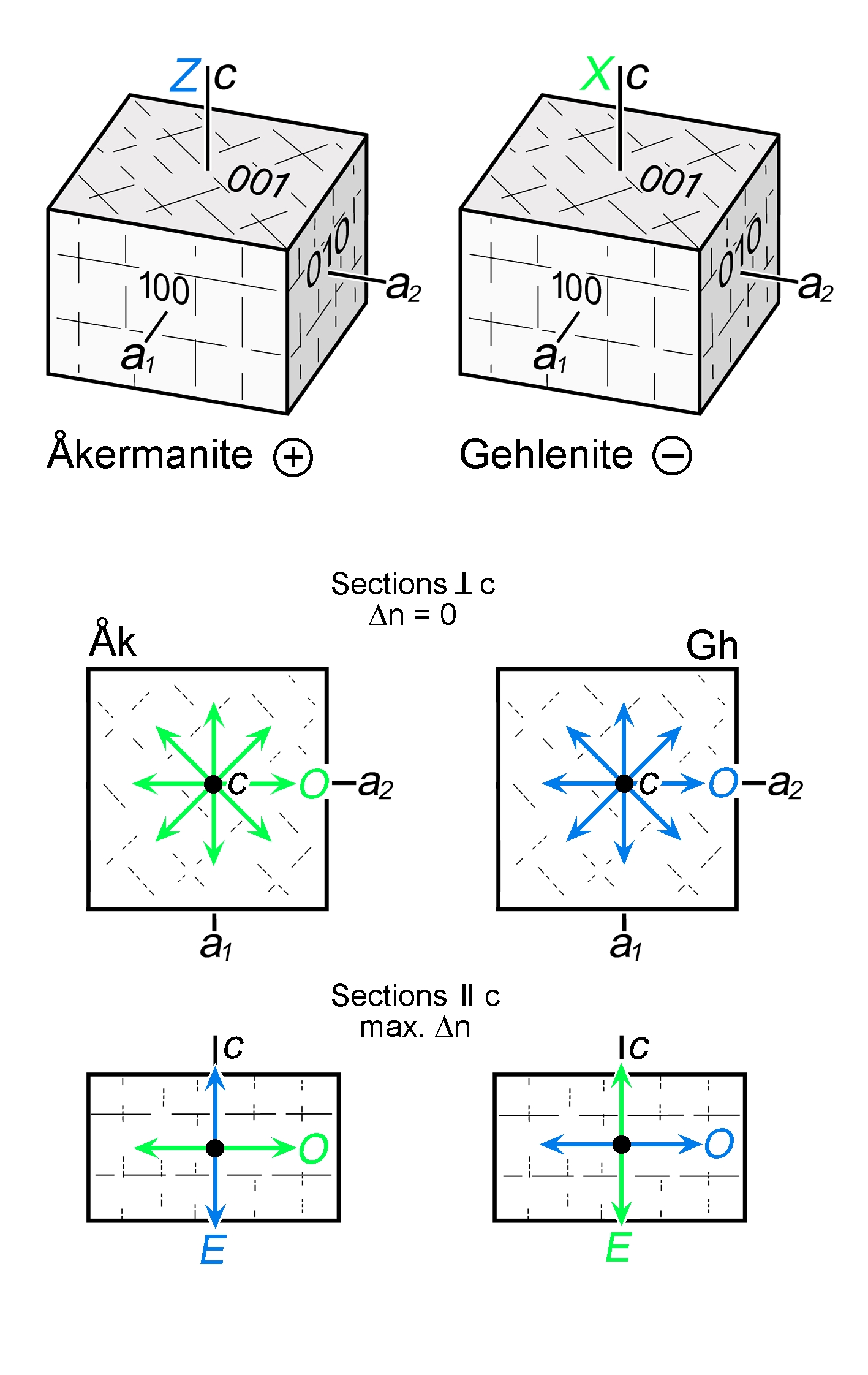|
| Formula | (Ca,Na)2(Mg,Al)(Si,Al)2O7 |
| | Optic class & sign | Uniaxial positive or negative |
| | Relief | Moderate, positive |
| | Refractive indices | no = 1.624 -1.669
|
|
ne = 1.616 -1.661
|
|
| n decreases from gehlenite to åkermanite; substitution of Na for Ca decreases n; Fe increases n |
| | Birefringence (max.) | 0.000 - 0.013 |
| | | Δn decreases from pure gehlenite to about 52-54 mol% åkermanite (Δn = 0), then increases towards åkermanite endmember composition; intermediate members show anomalous interference colours at Δn near zero. Fe increases Δn. Concentric variation of birefringence may be present, indicating compositional zoning. |
| | Sign of elongation | Length-slow, l (+), for gehlenite-rich compositions, length-fast, l (-), for åkermanite-rich compositions |
| | Interference figure | |
| | Colour / pleochroism | Colourless to pale yellow |
| | Zoning | |
|
|
| Form | Habit | Tabular; square or rectangular cross-sections |
| | | Surface | Typically subhedral to euhedral |
| | Cleavage | {001} indistinct; {110} poor |
| | Twinning | Rare |
| | Extinction | Straight to cleavage, basal {001} and prism {100} faces |
|
|
| Reaction textures | |
| | Alteration / decomposition | Hydrous Ca-Al-silicates, calcite, zeolites |
|
|
| Occurence | Ign | Silica-deficient mafic volcanics including melilite basalt, leucitite, melilite tuff; rare intrusive rocks |
| | | Met | High-grade impure carbonate rocks; sanidinite-facies calc-silicate reaction zones between subsilicic intrusives and carbonate rocks |
| | | Sed | |
| | | Hyd | |
| | | Other | |
|
|
| Distinctive properties | Low anomalous birefringence, habit, relief, mineral association |
| | Additional comments | Rod-like inclusions parallel to c may be present ("peg structure") |
|
|

 Images
Images 


 Images
Images 
